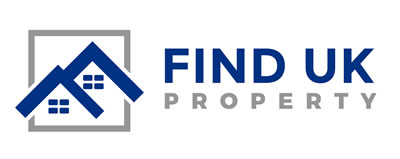
The North Is Better For Property Investment. Here's Why
Investing in property is a significant decision that requires careful consideration of various factors.
In Dr T’s latest ‘How To Invest’ episode, he tackles one of the most common questions UK property investors face: whether to buy in the North of England or near London and the South. Each region has its own advantages and challenges, and the right choice depends on your investment goals and strategy.
Here’s a breakdown of the key factors covered in this episode.
Investment Returns: Rental Yield and Capital Growth
Investment returns consist of two main components: rental yield and capital growth.
- Rental Yield
Rental yield measures the income generated by a property relative to its purchase price. Properties in the North offer higher percentage rental yields compared to those in the South.- In the South, a two-bedroom property priced at £300,000 may generate an annual gross rent of £12,000, resulting in a 4% yield.
- In the North, a similar property priced at £75,000 could generate a gross rent of £6,000, offering an 8% yield.
With a budget of £300,000, you could purchase four properties in the North, generating a total rent of £24,000, compared to £12,000 for one property in the South.
- Capital Growth
Contrary to popular belief, long-term percentage capital growth is historically similar across the UK. Over the past 70 years, house prices in most areas have doubled every 12 years, averaging an annual growth rate of 7%.
However, short-term growth can vary by region. For example, London experienced faster recovery after the 2008 financial crisis. Currently, the North shows potential for higher growth due to increasing economic activity, population growth, and housing demand.
Affordability and Risk
- Affordability
Properties in the North are significantly cheaper, making them more accessible to investors with limited budgets. A £300,000 investment in the South may buy a single property, whereas the same amount could secure multiple properties in the North, spreading risk and diversifying income sources. - Risk
Investing in lower-cost properties in the North reduces exposure during economic downturns. Lower-end properties often retain demand during recessions as people seek more affordable housing. Additionally, owning multiple properties minimises the impact of vacancies or maintenance issues.
Mortgages and Financing
The feasibility of financing your investment also depends on the region.
- In the South, low rental yields make it challenging to secure Buy-to-Let mortgages, especially with high interest rates. The net rent may not cover the mortgage payments, resulting in negative cash flow.
- In the North, higher yields improve the viability of Buy-to-Let mortgages. Additionally, the lower property prices allow investors to build portfolios gradually, even without relying on loans.
Flexibility
Owning multiple properties in the North offers greater flexibility. Investors can sell one property to raise funds while retaining others to maintain income. In contrast, owning a single, high-value property in the South limits options.
Active vs. Passive Investment
Your investment approach should influence your choice of location.
- Active Investors
If you prefer hands-on management and live in the South, buying locally may be advantageous. You can oversee maintenance and tenant issues personally, maximizing your net yield. - Passive Investors
For those seeking a hands-off approach, the North is ideal. With a reliable managing agent, you can enjoy higher returns with minimal involvement, regardless of where you live.
Conclusion
Both the North and the South offer unique opportunities for property investors. The North stands out for its affordability, higher rental yields, and diversification potential, making it an excellent choice for passive investors. On the other hand, the South may suit active investors with substantial budgets and a preference for local management.
If you’re considering a passive investment strategy, businesses like Find UK Property can simplify the process. They offer fully managed, affordable properties in the North, ensuring hassle-free ownership and steady returns.
No matter your choice, understanding the nuances of each region will help you make an informed decision and maximize your investment returns.
For more insights, visit Find UK Property’s YouTube Channel today.






